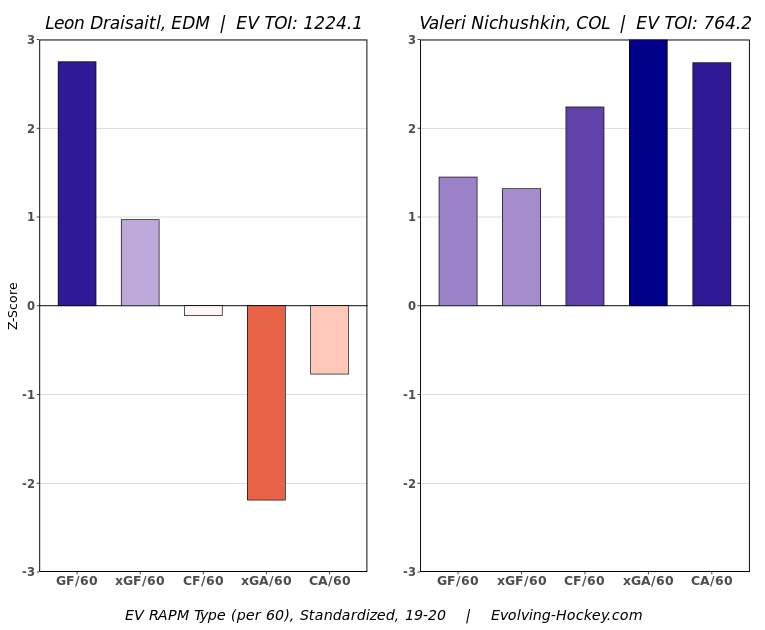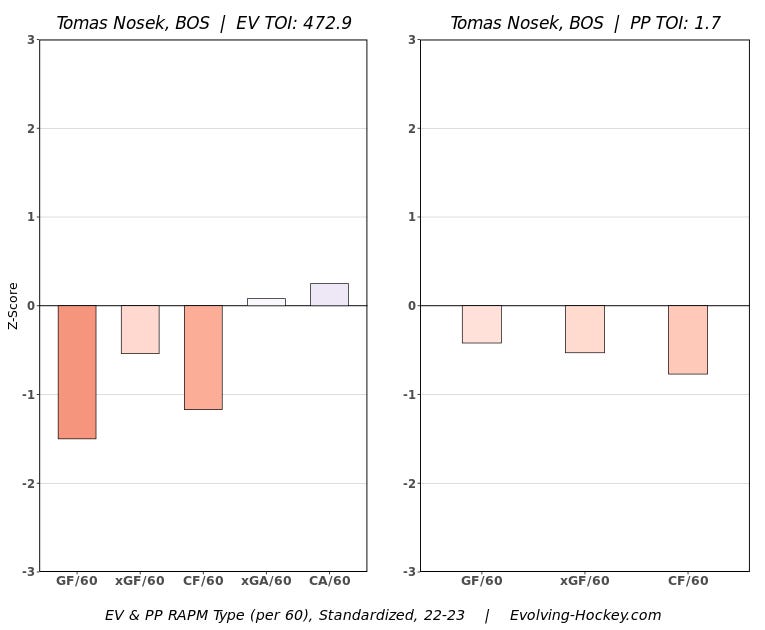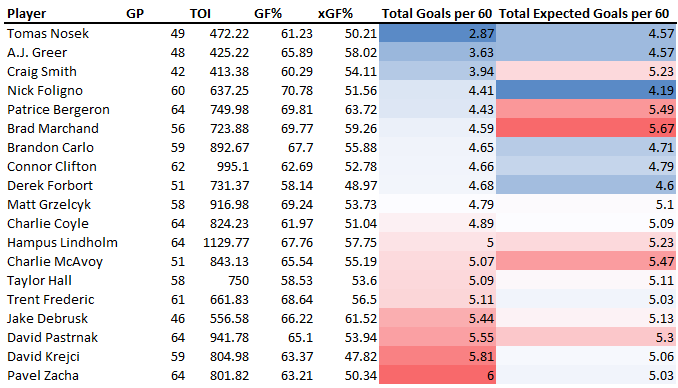While I do some underwriting and analysis of new developments, my day job mostly revolves around monitoring and assisting in the decision-making process of functioning assets and the companies that own them. Perhaps that’s why I have been so fascinated by more coaching-centric, day-to-day analysis this season.
I had a popular tweet thread about the relationship between analytics and coaching roughly a year ago now. While I have yet to follow that up with a cohesive essay on the topic, I have discussed relevant topics. In November, I had taken an interest in player roles. While discussing the Bruins, my friend exclaimed to me that he liked AJ Greer’s game. I agreed, based off of my eye test over the course of the first few weeks of the season, but knew that the numbers would not agree over the course of the season. I realized that my approval of Greer was contingent on his role - so I went ahead and wrote about it.
What has become strikingly obvious to me now, and perhaps went over my head at the time, is that I simply would be frustrated with Greer if he was placed alongside Patrice Bergeron or David Krejci. His current style of play would bring them down, and I’m not sure he has the offensive skill set to crack a top-six in the NHL.
Previously on the Evolving Hockey Podcast, we have had discussions surrounding regression models (regularized adjusted plus-minus) and how they measure a player’s impact in the role that they are given. However, I think much of the analytics community downplays the impact of a player's on their metrics.
A regression model assumes that every member of the population is trying to accomplish the same thing in the same way. However, the latter portion of that statement is not characteristic of the population of NHL players. While all players look to outscore their opponents while they’re on the ice, the degree to which goals for or against are expected of them can vary based on where they sit on the lineup card, the talent of the lineup that is being iced, the coach’s preferred play style, etc. These are qualitative, and to some extent subjective, variables that the model cannot account for.
Let’s take a trip to the past to re-explore the Draisaitl versus Nichushkin debate of 2020.
Valeri Nichushkin entered the 2019-20 season with seemingly a last opportunity to save his NHL career. He had gone back to Europe after the 2015-16 season after failing to meet expectations in his first three seasons. In his return in 2018-19, he failed to score a single goal in 57 games. His contract was bought out, and the Avalanche picked him up later on in the summer of 2019.
The Avalanche didn’t bring him in for his offensive play, but rather to tilt the ice in the Avalanche’s favor. He would finish the shortened regular season averaging just 11.7 minutes per game at 5-on-5 and 27 points in 65 games. This was a player who extraordinarily exceeded expectations both offensively and defensively, resulting is phenomenal advanced metrics. He would follow that season up by doing the same thing in 2021, before being brought up to play a bigger role last season. It just turned out that Nichushkin was a stud, and analytics brought the spotlight to him a bit earlier than it would have otherwise.
However, the debate didn’t start because advanced metrics were so high on Nichushkin, he was the comparison to the underwhelming advanced metrics of Leon Draisaitl - compared to his Hart Trophy status. Draisaitl would finish the regular season with 110 points in 71 games. While points can be a deceiving, suboptimal metric to use, the Oilers would also finish second in the weak Pacific Division despite their 4th and 5th leading point getters being Oscar Klefbom (34) and Zach Kassian (34).
When you are playing on a team with such little offensive talent, and you are world class in that realm, the reliance on and expectation for your offense becomes heightened to levels where it is acceptable, if not expected, to make defensive sacrifices. Is Leon Draisaitl a bad defensive player? I’d be pretty confident in saying he is below average at this point. But is his defensive play as poor as his metrics would suggest? I think not.
Back to the Bruins, since returning from injury, Tomas Nosek has been a player that has popped out to me. Heading into Sunday’s matchup against the Red Wings, the Bruins had a 3-0 lead in goals in 70 minutes at 5-on-5 since he stepped back on the ice in Vancouver. He had also controlled 16 of 31 (52%) entry attempts, and 13 of 23 (57%) exit attempts. One of those controlled entries was a secondary assist on the game-winning Hathaway goal - a pleasant reward. Looking at Nosek’s RAPM chart, it’s look quite underwhelming.
However, if I could encapsulate what is expected of the Czech forward, it would be this:
Keep a positive goal differential but allow as few goals against as possible
End your shifts in the offensive zone so the line coming on after you has an advantage
Win faceoffs
Be a reliable penalty killer
Heading into yesterday, Nosek had only been on the ice for 2.87 total goals per 60 minutes at 5v5. The average skater in the NHL has been on the ice for 6.12 goals per 60 this season. While some of that is a low on-ice shooting percentage and a high save percentage coming together for a magical mix of boredom, his expected goals are very low too. And for both, they favor the Bruins.
He’s also won over 59% of his faceoffs, which is particularly important given that he has the highest percentage of defensive zone starts among Bruins regulars. This also gives Jim Montgomery a vote of confidence given that Nosek is the only left-handed center on the Bruins, meaning he could really use Nosek on draws from the left circle.
Plus, he’s logged the second most 4-on-5 minutes among Bruins forwards, despite playing 15 fewer games than Charlie Coyle, Patrice Bergeron, and Pavel Zacha. He would seem to be playing a big role in a very successful penalty kill this season.
Unfortunately, I do not have data on where the puck is where his shifts end, but I’d assume he’s playing his part to transition the puck to the offensive zone given his entry and exit numbers as of late and all season long.
I think when you look at Nosek’s 12 points, his negative goals above replacement, and his lackluster RAPM chart, you start to question his presence. When you dig a little bit deeper, you find a player that has done everything asked of him and has been the glue holding together a successful fourth line for the Bruins.




I really enjoyed this article. The context on Nosek was enlightening.